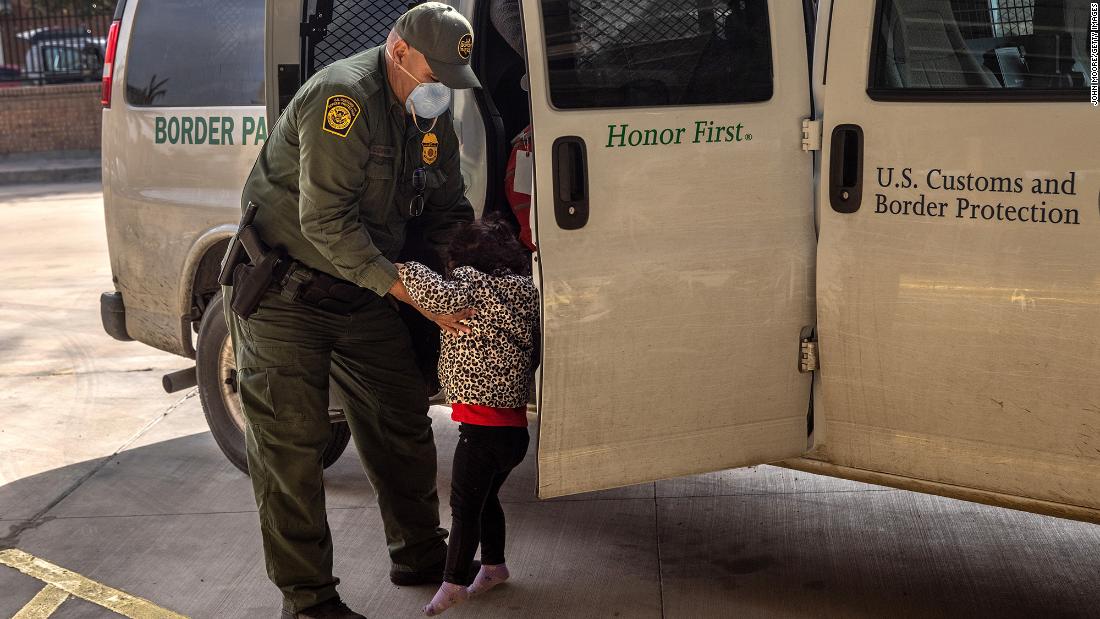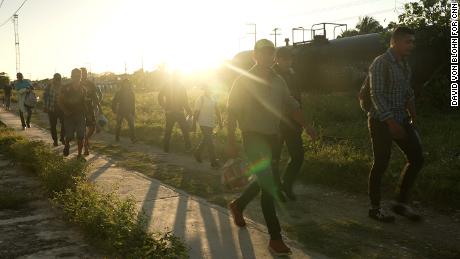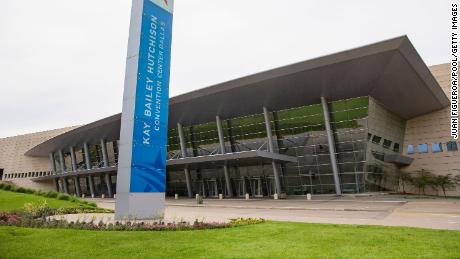The scramble at the border reflects an administration challenged with the pandemic and hit by the border flap before key officials and policies were in place
As is often the case, the plight of desperate people fleeing poverty, repression, crime and natural disasters in the hope of a better life in the US is being churned in the maelstrom of Washington politics. That so many of those concerned are so young, and packed into detention centers amid a pandemic, makes it even more tragic.
It is also raising the questions of whether border security and the fates of millions of undocumented migrants already in the United States — issues that defied Republican and Democratic presidents dating back to Ronald Reagan — can ever be solved given the nation’s current polarization and the rich political incentives for them to be exploited for shallow political purposes.
House Minority Leader Kevin McCarthy hit all the immigration buttons during a trip to the border on Monday, seizing the chance to divert attention from Biden’s popular $1.9 trillion Covid-19 rescue law and a vaccine drive that has left most Americans happy with the President’s handling of the pandemic.
“It’s more than a crisis. This is a human heartbreak,” the California Republican said near the US-Mexico frontier. “This crisis is created by the presidential policies of this new administration. There’s no other way to claim it than a Biden border crisis.”
McCarthy’s empathy for the victims of a complicated humanitarian story might have been genuine. But he was also a loyal supporter of the previous administration, which pursued an inhumane zero-tolerance program that separated children from their parents at the border and is left with hundreds of kids whose parents still can’t be traced.
McCarthy also borrowed Trump-style rhetoric Monday, with alarmist talk of immigrants sneaking across the border after traveling from Muslim-majority nations or impoverished non-White populations sometimes linked to terrorism that might stir racial prejudice in the United States. He said he had asked Border Patrol agents who they were catching.
In addition to people from Central America, the answer was, “Yemen, Iran, Sri Lanka. That’s what’s coming across. … They even talked about Chinese as well,” McCarthy said, at a time when there is rising concern about anti-Asian violence in the US in the wake of a pandemic that originated in China.
What to call a crisis?
While Republicans are capitalizing on the fraught circumstances on the border for political gain, there is little doubt that what is unfolding should be depicted as a “crisis.”
The sudden rise in children crossing the border alone has exposed a change in policy by the Biden administration. When Trump was President, border officials had been turning away migrants, including children, after putting in place a public health order related to the pandemic. While the Biden administration is still largely following that policy for adults and families, it has allowed children arriving on their own into the US, resulting in more minors in federal custody.
The federal government is often caught on the hop by crises in immigration, sudden health emergencies and national disasters. It can take weeks to grind the bureaucracy into gear. And comprehensive policies — like trying to stabilize nations, such as Honduras or El Salvador, where many migrants come from — can take years to quell the pace of arrivals over the border.
But it is hard to argue that the Biden administration’s handling of the politics of the child migrant surge has been adept. The scramble reflects an administration already challenged to cope with the vastness of the pandemic that was hit by the border flap before key officials were in place or there had been time for new policies to be planned or properly implemented.
The White House has spent days declining to call the border crossings a “crisis” — a semantic game that risked leaving the impression that it was not necessarily giving a grave issue the attention it demanded. But presidents also don’t get the luxury of choosing their crises — especially early ones that can define perceptions of a new administration.
White House press secretary Jen Psaki was fencing on definitions on Monday — with Republicans ready to pounce on any missteps.
“We recognize this is a big problem,” Psaki said in an exchange with CNN’s Phil Mattingly, when asked whether the border was trapped in a disaster.
“(We) always get into the fun of labels around here, but I would say our focus is on solutions,” Psaki said. “Clearly the numbers are enormous. This is a big challenge, and it certainly is a reflection of using every lever of the federal government to help address that,” she said.
New urgency
The administration has indeed begun to show greater urgency. It has surged Department of Health and Human Services and Department of Homeland Security staff to border states. The new Homeland Security secretary, Alejandro Mayorkas, directed the Federal Emergency Management Agency to help manage children who have crossed the border. Biden dispatched a team of senior officials to the border earlier this month.
But the cornerstone of White House public statements remains that it’s Trump’s fault.
“The last administration left us a dismantled and unworkable system, and like any other problem, we are going to do everything we can to solve it,” Psaki said.
Presidents often blame early problems on their predecessors. But it’s not a position that is sustainable for very long, since occupants of the Oval Office are expected to solve the hardest problems.
One problem the White House may need to address more directly is the possible perception that a more humane immigration policy means it’s a good time for migrants to cross the border.
Top White House officials have repeatedly warned that potential migrants should not form such an impression.
In December, Biden, while still President-elect, said he was concerned that lifting tough Trump policies too quickly could lead to “2 million people on our border.”
The new White House has ended the former President’s “Remain in Mexico” policy, which required migrants to stay south of the border to wait for their asylum cases to be heard in US courts. The fact that some formerly covered by the system have been let into the United States could have caused mixed messages over the true situation.
That raises the question of whether a more personal and direct warning for migrants not to attempt a perilous crossing — that would penetrate foreign media markets — might be needed from the President himself.
Such a message delivered with Biden’s trademark empathy might be a top topic in the first formal presidential news conference of the new administration — which officials say will take place this month.
CNN’s Priscilla Alvarez contributed to this report.
![]()






